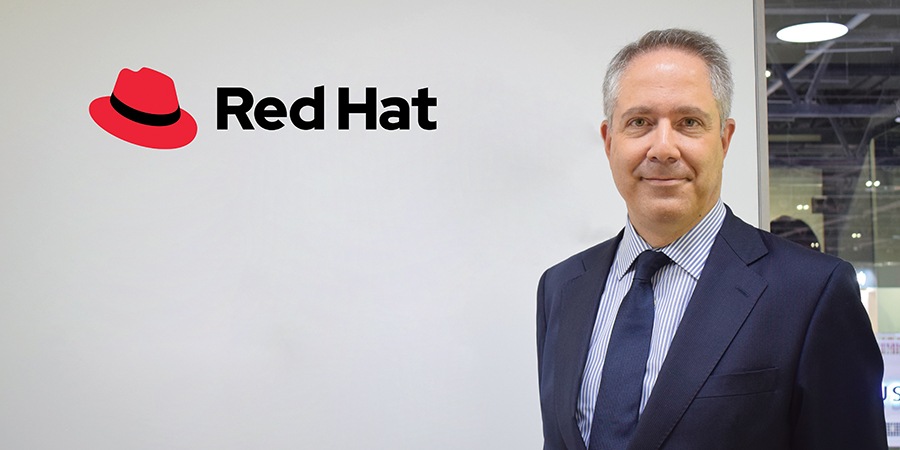In an exclusive with Santiago Madruga, VP, partner ecosystem success, EMEA, Red Hat, we gain insights on the relevance of having partners in the ecosystem and how it influences Red Hat’s operations and platform development.
How do you oversee operations and ensure that Red Hat achieves critical business objectives?
We try to leverage all of the power of innovation that happens in the open source community. We package it on the software that we provide, after all the quality tests, documentation and lifecycle management. Together with the partners, we make it available to the end customers. The partners play a critical role here because, with their help, we assist the end customers in deploying, utilizing and making the software more productive.
At the end, we're selling a platform that helps the customer use any application they need, in whatever environment they prefer, either in a private cloud, multi-cloud or hybrid environments. What they get with us is the freedom to move the workloads on whatever situation they want flexibly and to also automate their operations. That automation runs from the development up to the operations.
There’s a lot more agility in how the development and operations work together due to a DevOps environment that helps the collaboration between the different parts of the company in a very secured, controlled manner.
What significant role do partners play in Red Hat's cloud ecosystem?
Partners are absolutely key for telcos and any other end customers to get value from [cloud] technology. First of all, they help clients to implement and adopt the technology but also make everything else underneath work through the platform that helps customers move workloads from one cloud to the other.
Partners help on the integration of the whole environment as well as the workloads of the applications that run on top to make it a business solution to whatever they're looking for.
Also, when the clients, like telcos or others, are developing their own software, partners play a fundamental role in helping the clients know how to work through an agile development environment [DevOps]. There are many different types of partners — from software vendors to OEMs, services companies, etc. I think all of them play a role, and Red Hat is just one more partner in the ecosystem. All of us are working together with quality and good relationships for the benefit of the end customers.
Red Hat’s OpenStack Platform (RHOP) was just made publicly available. What benefits could this bring to the table?
OpenStack is not a new technology; we've been working on it for more than a decade with the open-source ecosystem partners and a lot of input from the clients, who are majorly telcos. The recent release is a new step to make it even more usable, more cloud-friendly and still bring in the quality, performance, security and reliability that telcos need.
How will Red Hat contribute to the world’s ongoing digitalization journey?
The world is going digital, not only the telcos but also the whole value chain across society, from consumers to enterprises. We will see both businesses’ and consumers’ behaviors change.
One example of this is the amount of information that is going to be available. We all have information on our mobiles, but even the machines – the things that we use – will be consuming information that gets generated, consumed and processed closer to the consumer.
This may sound theoretical and high-level, but when we are discussing smart metering for electricity companies or cars driving alone, these sectors are forming the business models based on more information that is available and being processed where it is needed.
All of these means going digital, and Red Hat is driving technology to support all of those changes with new architectures that make applications a lot more modular. Modern applications will not be software that gets installed in one computer. Instead, a part of the application will be installed very close to the consumer so that it can process the information and act on it in real time.
Red Hat is providing the platform and the architectures to do that at scale with the right performance, security and availability. We might usually think of it as simply technology, but we are actually talking about people's lives. For instance, health operations will be done remotely. You don't want the systems or the network to go down when a doctor is performing his duties virtually.
With this life-changing potential, Red Hat’s technology will be instrumental, together with the rest of the ecosystem and the telco partners.
What are the next steps to be taken in expanding Red Hat’s ecosystem further in the region?
The business is growing, and we already have a great value proposition with a market that is very eager to have more. Hence, we are looking for partners that can help us scale our presence and bring more value of open source to the end customers.
Moreover, we are also looking for deeper relationships with partners where we can construe joint value propositions that make more sense to the clients. Due to this, we see telcos as partners and not only customers. We sell to the telcos but also partner with them to reach out to more clients with a higher value proposition.
Aside from telcos, we partner with system integrators, ISPs and OEMs, among others. Again, we are expanding and we are looking to cover the market with more partners, particularly focusing on those partners that can make more of a difference to the end clients.











